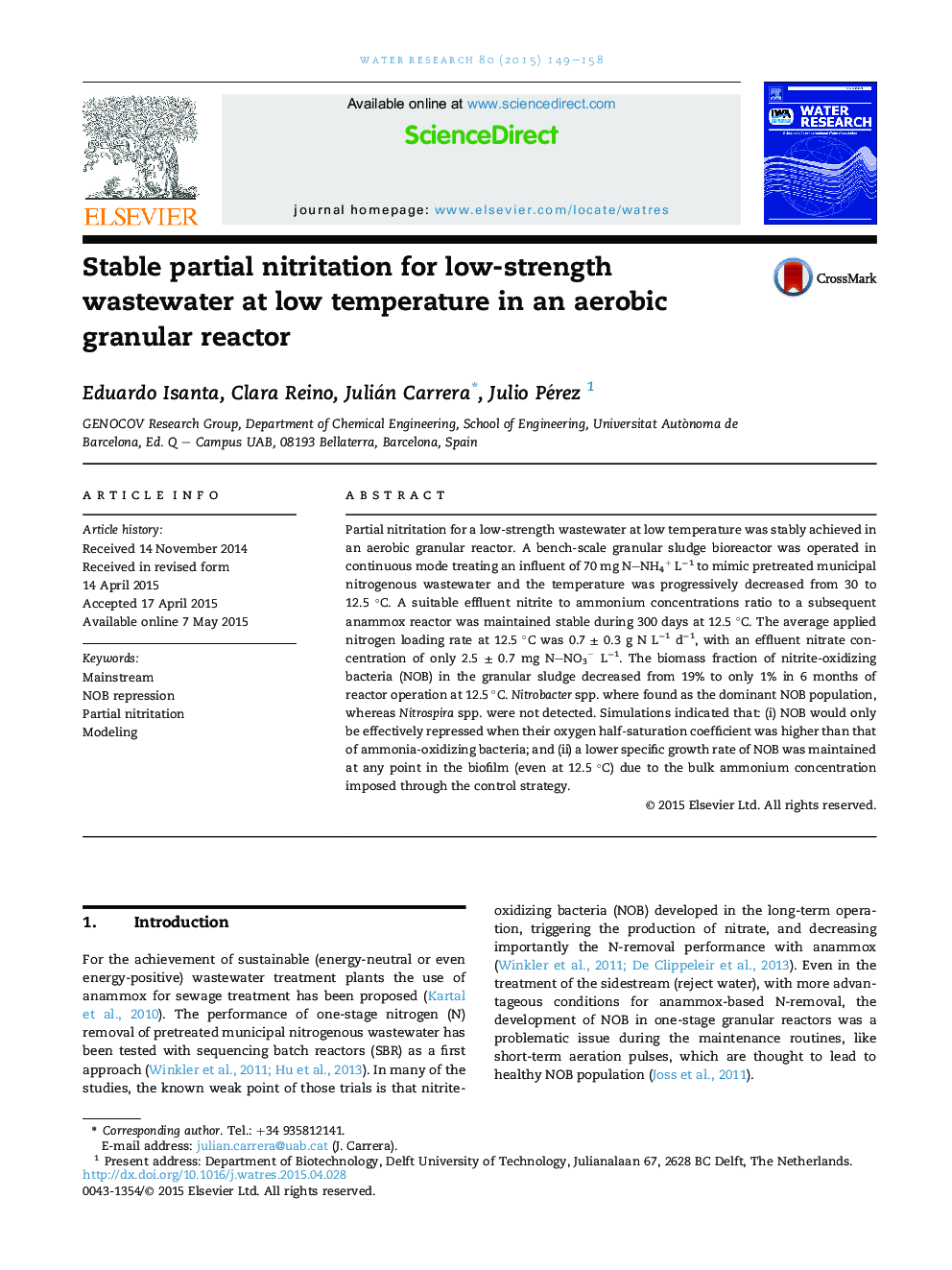| Article ID | Journal | Published Year | Pages | File Type |
|---|---|---|---|---|
| 6365686 | Water Research | 2015 | 10 Pages |
â¢Long-term partial nitritation at low temperature was stable in a granular reactor.â¢Nitrobacter spp. were effectively washed-out from the granular sludge.â¢An excess of ammonium is required to keep AOB growth rate higher than that of NOB.â¢A two-stage system is a suitable technology for mainstream autotrophic N-removal.
Partial nitritation for a low-strength wastewater at low temperature was stably achieved in an aerobic granular reactor. A bench-scale granular sludge bioreactor was operated in continuous mode treating an influent of 70 mg N-NH4+ Lâ1 to mimic pretreated municipal nitrogenous wastewater and the temperature was progressively decreased from 30 to 12.5 °C. A suitable effluent nitrite to ammonium concentrations ratio to a subsequent anammox reactor was maintained stable during 300 days at 12.5 °C. The average applied nitrogen loading rate at 12.5 °C was 0.7 ± 0.3 g N Lâ1 dâ1, with an effluent nitrate concentration of only 2.5 ± 0.7 mg N-NO3â Lâ1. The biomass fraction of nitrite-oxidizing bacteria (NOB) in the granular sludge decreased from 19% to only 1% in 6 months of reactor operation at 12.5 °C. Nitrobacter spp. where found as the dominant NOB population, whereas Nitrospira spp. were not detected. Simulations indicated that: (i) NOB would only be effectively repressed when their oxygen half-saturation coefficient was higher than that of ammonia-oxidizing bacteria; and (ii) a lower specific growth rate of NOB was maintained at any point in the biofilm (even at 12.5 °C) due to the bulk ammonium concentration imposed through the control strategy.
Graphical abstractDownload high-res image (379KB)Download full-size image
